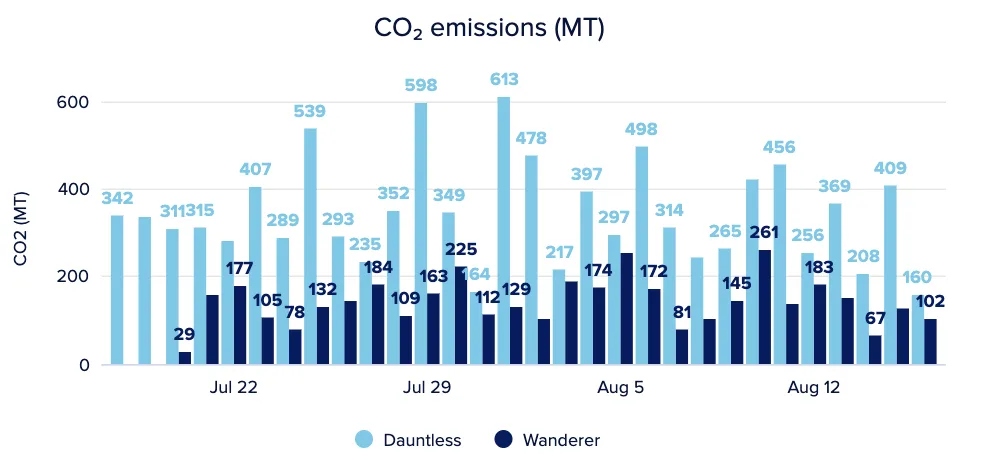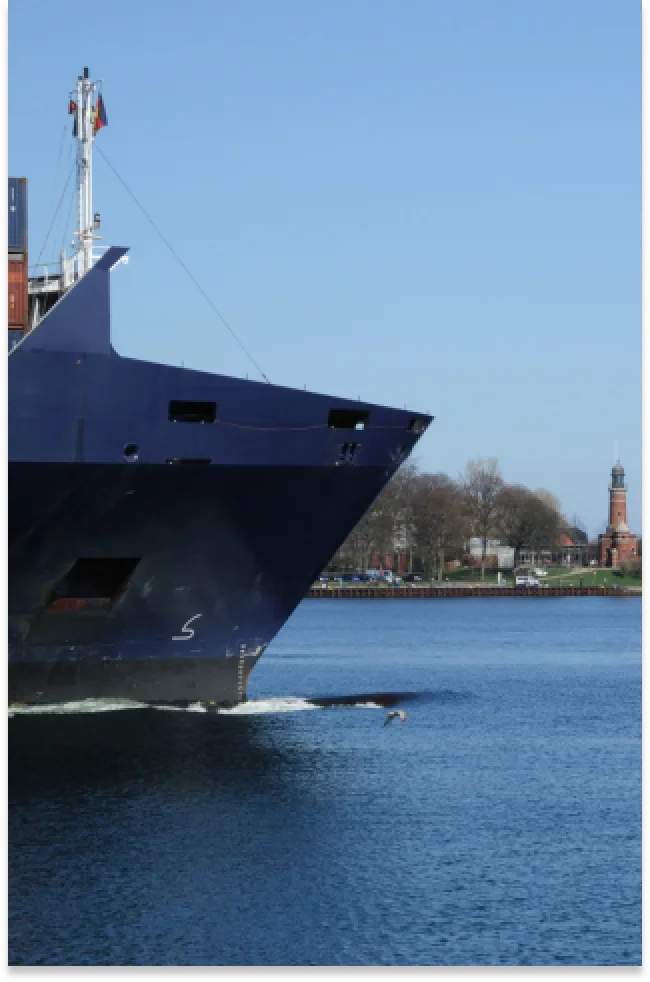Direct emission measurements are compliant with Regulation 2015/757 (Article 21) on the European Union’s guidelines for monitoring, reporting, and verification (“MRV”) of carbon dioxide emissions, as well as Regulation 22A in MARPOL Annex VI of the International Maritime Organization’s (“IMO”) Data Collection System (“DCS”) for fuel oil consumption on vessels.
For further reference: Both MEPC.346(78), Chapter 8 and MRV Regulation (EU) 2015/757, Method D “Direct CO2 emissions measurement” offer the option to report direct CO2 emissions measurement by multiplying the CO2 concentration of the exhaust gas with the exhaust gas flow as an alternative to the measurement of the fuel oil consumption.
Given new regulatory factors that ship owners now need to carefully consider, the EU MRV and IMO DCS both allow ship owners some agency in defining which methodologies they utilize to calculate their vessel fuel consumption.
IMO DCS
In June of 2022, the IMO adopted by resolution MEPC.346(78) that companies following the SEEMP Part II (data collection plan) “may use” direct CO2 emission measurements.
DIRECT CO2 EMISSIONS MEASUREMENT
8.1 Direct CO2 emission measurement is not required by regulation 27 of MARPOL
Annex VI.
8.2 Direct CO2 emissions measurement, if used, should be carried out as follows:
.1 this method is based on the determination of CO2 emission flows in exhaust
gas stacks by multiplying the CO2 concentration of the exhaust gas with the
exhaust gas flow. In case of the absence or/and breakdown of direct CO2
emissions measurement equipment, manual tank readings will be conducted
instead;
.2 the direct CO2 emissions measurement equipment applied to monitoring is
located so as to measure all CO2 emissions from the ship. The locations of
all equipment applied are described in the monitoring plan; and
.3 calibration of the CO2 emissions measurement equipment should be
specified. Calibration and maintenance records should be available on
board.
EU MRV
Article 21 within Regulation 2015/757 of the European Parliament and Council also explicitly states the authorized use of direct emission measurements.
Method D: Direct CO2 emissions measurement
The direct CO2 emissions measurements may be used for voyages and for CO2 emissions occurring in ports located in a Member State’s jurisdiction. CO2 emitted shall include CO2 emitted by main engines, auxiliary engines, gas turbines, boilers and inert gas generators. For ships for which reporting is based on this method, the fuel consumption shall be calculated using the measured CO2 emissions and the applicable emission factor of the relevant fuels.
This method is based on the determination of CO2 emission flows in exhaust gas stacks (funnels) by multiplying the CO2 concentration of the exhaust gas with the exhaust gas flow.
The calibration methods applied and the uncertainty associated with the devices used shall be specified in the monitoring plan.”
Why Are Direct CO2 Measurements Useful?
In operations, accuracy is king. Because SailPlan’s direct emission measurements are compliant and regulatory-friendly, companies should utilize SailPlan’s technology (with real-time reported direct measurements) over bunker fuel delivery notes (BDN), flow meters, or any other variation of Methods A-C. And don’t simply take our word for it: the EU MRV Direct Measurement Clause (Annex 1) explicitly states that, “Any combination of these methods, once assessed by the verifier, may be used if it enhances the overall accuracy of the measurement.”
Case Study on Reduced Emissions: Direct measurement of emissions has enabled SailPlan customers to lower reportable CO2 emissions by up to 11%, significantly improving CII and reducing associated costs including biofuel spend.

Direct measurements provide a degree of accuracy that other tools don’t have the capacity to.
And why is that important? Direct measurement is the only system that gives you continuous, real-time feedback about what is going on with your vessel’s emissions. SailPlan’s system delivers the honest emissions truth, in terms of both CO2 and other GHGs. Rather than doing complex calculations in-house and using off-the-shelf carbon factors that will at best get you somewhere in the ballpark in terms of your ships’ emissions, SailPlan’s system will put you exactly on home base. In essence, SailPlan is able to act as a compliance safeguard with real-time, highly-accurate measurements that can generate an important report in a few keystrokes.

On The Horizon For GHG Regulation: Regulations for Measuring Greenhouse Gasses
It is critical that companies are well-positioned for when international agencies, such as the EU, open the door to monitoring emissions outside of CO2. Both the European Union and the IMO have indicated that they will add other emissions gasses to the ETS. Starting in 2026, CH4 and NOX are both covered by the ETS. SailPlan can help you track and report all GHGs.


Another important consideration is the continuous and rising costs of taxes that the EU MRV and regulators are considering placing on shipowners. With the rising costs of methane, a harmful ghg, EU regulators are hopeful shipowners will divert their capital into investing in LNG and less toxic fuels for their operations. Given this regulatory framework, SailPlan and many other companies operate under the premise that the scope of emissions that are regulated and monitored will increase in upcoming years to meet achievements set out in the Paris Agreement and in COP discussions.
SailPlan’s continuous CO2 reporting can fit current MRV and IMO standards in addition to shielding companies against evolving regulatory requirements.
A regulatory weapon for companies that want real-time information about their engines, boilers, and other equipment on their vessel, SailPlan’s reports can be generated automatically for each ship, saving countless hours when compared to manual report generation. And while Classification Societies are critical partners in all matters related to compliance, including the development of the SEEMP, SailPlan’s technology will improve emissions. SailPlan’s accurate emissions measurement system should be welcomed by Classification Societies as it truly eliminates any doubt about a ship’s true emissions. Our advice is to approach your Classification Society to discuss revising your SEEMP Part II and your MRV Monitoring Plan to reflect the use of direct measurement: our belief is that the Classification Society will welcome the approach.
Get in touch with us today to learn more about how SailPlan can help your fleet.


